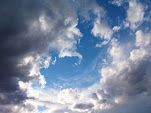In 2008 I made my fourth pond. Third pond was too small and too shallow for water lilies so I had to make a new one. In this story I will show how it was made. Note that it is today, four years later still in good condition.
Pond is located on a piece of land just after orchard and it is some 130 meters from my house. All of them are and were on that same small square shaped piece of land that I claimed as mine. My parents didn’t paid much attention to what I was doing but now they see that I was serious in building lake and often go to see if any water lily has blossomed. New pond was made next to the old one so that animals can much easily cross from one to another by the time I start drying out the old pond.
Since my resources ware scarce, I made it from nylon but everything began with the shovel. It is always a good thing to mark the shape and dimensions you are trying to create. For that you can use small wooden stake and a rope.
The digging part was boring and hard but I started my work at the end of March so the soil was wet and that way much easier to dig.
The sides and the bottom of the lake (hole) had to be smooth so that nylon doesn’t get ruptured. After smoothing it with an ordinary kitchen knife (big one) I laid down plastic foil (vapor barrier) that usually under laminate floors. That plastic foil cam cheap and it provided some additional protection against rupturing the nylon. Nylon itself was of thicker kind and was double folded, once again to prevent rupturing and prolong durability of lake itself.
I planned my lake to be as natural as possible so the bottom was covered with 20 cm of dirt (8 inch) and at the later date planted water lilies in it. But, in order for animals to be able to go in and out of the lake there had to be some kind of shore…for that part I will let the pictures tell the story :).
|
| ||
“Central island” was installed on 5 cm (2 inch) thick plastic foam board to ensure that brick doesn’t rupture the nylon. It would be a good idea to do that before putting water in…I had to learn that the harder way.
Note: always cover the edges and do not leave nylon exposed to weather conditions. Sun and snow can weaken it and cause it to be fragile to touch (I had that problem on my third lake). That is one of the reasons I covered up my edges with thin layer of dirt and installed “shore” made of plastic foam blocks, moss and curtain.
Note: always cover the edges and do not leave nylon exposed to weather conditions. Sun and snow can weaken it and cause it to be fragile to touch (I had that problem on my third lake). That is one of the reasons I covered up my edges with thin layer of dirt and installed “shore” made of plastic foam blocks, moss and curtain.
Grass growing on the “shore” made it stronger with its roots so even if the curtain rotten over the time the roots will keep everything in place. The rooting hasn’t happen so far, 4 years later.



















0 comments:
Post a Comment